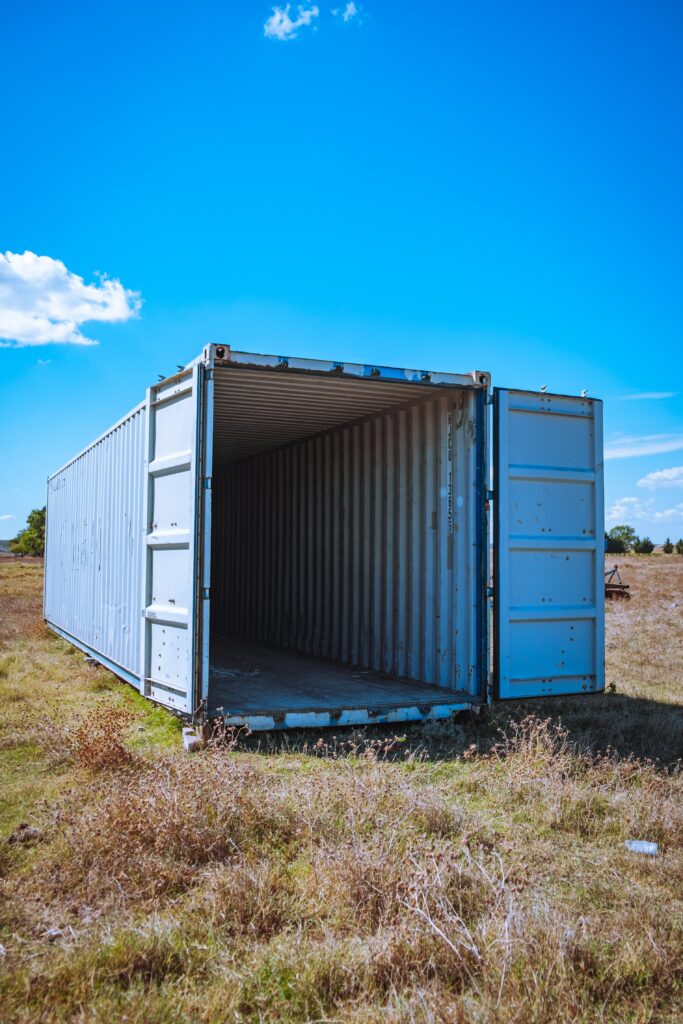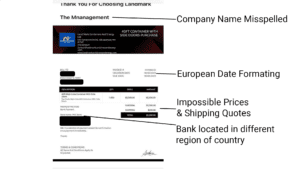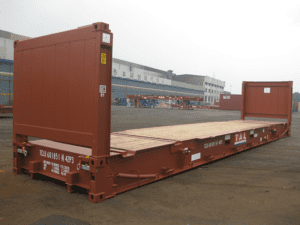Shipping containers are a versatile, durable, and cost-effective solution for various storage and transportation needs. At K3 Containers and Transport, we specialize in providing new and used shipping containers to cater to your business requirements. As a first-time buyer, you may be overwhelmed by the sheer number of choices and factors to consider before making a purchase. That’s why we’ve created this comprehensive guide to help you navigate the process and make an informed decision when buying used shipping containers.
In this beginner’s guide, we will cover essential aspects, including understanding container sizes and dimensions, key factors to consider when buying, the container grading system, inspection tips, finding the best place to purchase, and more. Our aim is to provide you with the knowledge and confidence needed to choose the right shipping container for your specific needs.
Understanding Shipping Container Sizes and Dimensions
Common Shipping Container Sizes
When it comes to used shipping containers, there are several standard sizes available to accommodate various storage and transportation needs. The most common sizes are:
- 20-foot container: Offering 1,360 cubic feet of storage space, these containers are ideal for small businesses, residential storage, or transportation of goods.
- 40-foot container: With 2,720 cubic feet of storage capacity, these containers are suitable for larger storage requirements, international shipping, or commercial projects.
Keep in mind that these dimensions refer to the external measurements of the containers, and the internal storage space will be slightly smaller due to the thickness of the walls.
High cube vs. standard height
Standard height shipping containers typically have a height of 8 feet 6 inches (2.59 meters), while high cube containers have an additional foot of height, making them 9 feet 6 inches (2.9 meters) tall. This extra height can make a significant difference depending on the intended use of the container.
Advantages of High Cube Containers
High cube containers offer several benefits due to their increased height:
- Increased Storage Capacity: The additional height provides more vertical storage space, allowing you to store larger items or stack items higher without worrying about running out of room.
- Better Air Circulation: The extra height creates more air volume inside the container, which can lead to better air circulation and temperature regulation, especially when using the container for storage or as a workspace.
- More Space for Modifications: If you plan to modify your container, high cube containers provide extra headroom, which can be advantageous for installing insulation, lighting, HVAC systems, or creating a comfortable living or working space.
When to Choose a Standard Height Container
Despite the advantages of high cube containers, standard height containers may still be the right choice in certain situations:
- Cost: Standard height containers are generally more affordable than high cube containers, which can be an important consideration if you’re on a tight budget.
- Space Constraints: If your available space is limited, a standard height container might be a better fit, as it will occupy less vertical space.
- Transportation and Shipping: Standard height containers are more common and widely accepted for shipping purposes. Some transport carriers and locations may have height restrictions that could make it challenging to transport high cube containers.
When deciding between a high cube or standard height shipping container, consider your specific needs, budget, and the intended use of the container. By evaluating these factors, you can determine which option is the most suitable for your project.
Shipping container size chart
To further assist you in choosing the right container size for your needs, consider referring to a shipping container size chart. These charts provide detailed information on the external and internal dimensions, door openings, and maximum payload of different container sizes. By consulting a size chart, you can make an informed decision based on the specific dimensions and capacity requirements of your project.
Factors to Consider When Buying a Used Shipping Container
Intended use and purpose
Before purchasing a used shipping container, it’s essential to have a clear understanding of its intended use. Will you be using it for storage, transportation, or another purpose altogether? Identifying the primary function of the container will help you determine the most suitable size, grade, and any additional features you may need.
Container Grade and Condition
Used shipping containers come in various grades that reflect their condition. At K3 Containers and Transport, we categorize our containers into five distinct grades:
- One-Trip (Grade A)
- Grade 2 CW
- Grade 3 As-Is
- Grade 4 As-Is
- Grade 5 Scrap
Each grade represents a different level of quality, with Grade A being the best and Grade 5 being the most worn. It’s crucial to select a container grade that aligns with your intended use and budget. For example, if you need a container for shipping purposes, you should opt for a Cargo Worthy grade (One-Trip or Grade 2 CW) that meets the necessary requirements.
Location and Delivery
When buying a used shipping container, consider the logistics of transporting it to your desired location. It’s often more cost-effective to purchase from a local supplier like K3 Containers and Transport to reduce delivery fees. Additionally, it’s essential to ensure that your site is accessible and prepared for the container’s arrival. This may involve clearing the area, leveling the ground, and confirming that there is sufficient space for maneuvering and placing the container.
Budget and Financing Options
Lastly, consider your budget when buying a used shipping container. Prices can vary depending on the container’s size, grade, and supplier. It’s crucial to compare prices from different sellers to find the best deal. Some suppliers, like K3 Containers and Transport, may also offer financing options or payment plans, making it easier for you to acquire a container that meets your needs without breaking the bank.
Shipping Container Grading System
Explanation of the grading system
The grading system for used shipping containers is designed to provide a standardized way of evaluating and comparing their condition. At K3 Containers and Transport, we use the following grading criteria:
- One-Trip (Grade A): Almost new, used only for a single shipping trip; minimal wear and tear. These containers are ideal for projects that require a container with a clean appearance and a long lifespan.
- Grade 2 CW: Used but still in good condition; suitable for shipping and storage; may have minor cosmetic damage; already considered Cargo Worthy. These containers offer a balance between quality and affordability.
- Grade 3 As-Is: Used, with signs of wear, but can be restored to Cargo Worthy condition with repairs costing up to $700; structurally sound and weatherproof; suitable for storage but not for shipping without the necessary repairs.
- Grade 4 As-Is: Used, with visible damage, rust, or compromised structural integrity; requires repairs costing between $701 and $1,200 to be considered Cargo Worthy; might require further repairs before use. These containers are more affordable but may need additional work to make them suitable for your needs.
- Grade 5 Scrap: Severely used, with significant damage or corrosion; not suitable for storage or shipping; typically sold for scrap metal or other purposes; requires repairs costing over $1,200 to be considered Cargo Worthy. These containers are the most affordable option but require the most extensive repairs.
Understanding the differences between these grades will help you choose the right container based on your requirements, budget, and intended use.
Inspecting a Used Shipping Container
External Inspection
Before purchasing a used shipping container, it’s crucial to conduct a thorough inspection to ensure it meets your requirements and expectations. Begin by examining the container’s exterior. Check for any signs of rust, corrosion, or damage that might affect its structural integrity. Pay close attention to the doors, hinges, and seals, ensuring they are in good condition and function properly. If you notice any issues, discuss them with the seller to determine whether repairs or adjustments are necessary.
Internal Inspection
An internal inspection is crucial when buying a used shipping container, as it allows you to assess the container’s condition and identify any potential issues. Pay close attention to the following aspects during the internal inspection:
Flooring
Inspect the container’s flooring for any signs of damage, rot, or wear. The most common type of flooring in shipping containers is plywood, which can be susceptible to water damage and decay over time. Check for soft spots, cracks, or any signs of mold or mildew. Damaged flooring can compromise the container’s structural integrity and may require costly repairs or replacement.
Walls and Ceiling
Examine the walls and ceiling for any signs of rust, corrosion, or damage. Look for dents, punctures, or any areas where the metal appears to be compromised. Check for any signs of previous repairs or modifications, as these could indicate underlying issues. Additionally, inspect the interior paint for peeling or discoloration, which may suggest water damage or poor maintenance.
Doors and Door Gaskets
Check the container’s doors and door gaskets for any signs of wear, damage, or deterioration. Ensure that the doors open and close smoothly and that the gaskets create a proper seal when the doors are closed. Damaged or worn gaskets can lead to water and air leaks, compromising the container’s weatherproofing and security.
Ventilation and Odors
Inspect the container’s vents for any blockages or damage that could impede airflow. Proper ventilation is essential for preventing condensation, mold, and mildew inside the container. Additionally, pay attention to any unusual odors during the inspection, as this may indicate water damage, mold, or the presence of harmful chemicals.
Lighting and Electrical Components (if applicable)
If the container is equipped with lighting or electrical components, ensure that they are functioning correctly and meet safety standards. Check for any exposed wiring, damaged fixtures, or other potential hazards.
Thoroughly inspecting the interior of a shipping container helps you make an informed decision and avoid potential issues down the line. If you’re unable to inspect the container in person, request detailed photos or videos from the seller to get a better understanding of the container’s internal condition.
Importance of a Thorough Inspection
A thorough inspection is a critical step in the buying process, as it helps you identify potential problems and ensure the used shipping container meets your needs. By evaluating both the external and internal condition of the container, you can make an informed decision on whether it’s the right fit for your project. Furthermore, discussing any concerns with the seller can help you negotiate repairs, adjustments, or even a lower price, ultimately leading to a better overall investment.
Finding the Best Place to Buy Shipping Containers
Local suppliers
One of the best places to start your search for used shipping containers is with local suppliers like K3 Containers and Transport. Buying from a local supplier can save you money on delivery costs and provide you with the opportunity to inspect the containers in person before making a purchase. Additionally, local suppliers are more likely to be familiar with regional regulations and requirements, ensuring that the containers they sell are compliant with local laws.
Online Marketplaces
Online marketplaces can also be a valuable resource for finding used shipping containers. Platforms such as eBay, Craigslist, and specialized container websites offer a wide range of container options, sizes, and conditions. However, it’s essential to be cautious when buying from online sellers, as the quality of the containers may vary. Make sure to ask for detailed photos, descriptions, and information about the container’s history before finalizing your purchase.
Shipping Lines and Container Leasing Companies
Shipping lines and container leasing companies may also have used shipping containers for sale. These organizations often retire containers from their fleets after a certain period or when they no longer meet their specific requirements. Contacting shipping lines and leasing companies directly can give you access to well-maintained containers at competitive prices.
Container Auctions
Another option for finding used shipping containers is container auctions. These events, often held by shipping lines, container leasing companies, or specialized auction houses, can provide a wide variety of containers at competitive prices. However, it’s crucial to remember that auctions can be fast-paced, and you may not have as much time to inspect the containers thoroughly before bidding.
Comparing Options and Finding the Best Deal
When searching for the best place to buy shipping containers, it’s essential to compare your options and carefully consider the factors mentioned earlier, such as container grades, inspection, and delivery. By weighing the pros and cons of each option and keeping your specific needs and budget in mind, you can find the ideal used shipping container for your project.
Container Modifications and Storage Solutions
Popular Modifications and Their Uses
Although K3 Containers and Transport does not currently offer in-house modifications, it’s essential to be aware of popular container modifications when considering your purchase. Common modifications include adding windows, doors, insulation, and climate control systems. These changes can transform a shipping container into a functional space such as an office, workshop, or even a living area. When buying a used shipping container, consider whether you will need any modifications to suit your intended use and factor in the cost and effort involved in making these changes.
Container storage for rent options
If you need temporary storage solutions or are not ready to invest in purchasing a shipping container, renting a container could be an ideal alternative. Many suppliers offer a variety of container storage rental options, allowing you to choose the size, grade, and rental duration that best suits your needs. When comparing rental options, consider factors such as location, accessibility, security features, and pricing to ensure you find the most suitable solution.
How to choose the right storage solution
To choose the right storage solution, first evaluate your specific needs, such as the duration of storage, the items you plan to store, and any particular environmental requirements. This information will help you determine whether purchasing or renting a shipping container is the most cost-effective and practical choice. Additionally, consider factors such as location, accessibility, and security when selecting a storage solution, ensuring that your items remain protected and easily retrievable when needed.
Tips for Buying Used Shipping Containers
Researching the Market
Before purchasing a used shipping container, it’s essential to research the market thoroughly. Gather information on container sizes, grades, and prices from various sellers to get a better understanding of what’s available and the average cost. This research will help you identify trends and make more informed decisions when selecting a container that meets your requirements and budget.
Communicating with the Seller
Maintaining open communication with the seller is critical when buying a used shipping container. Ask questions about the container’s history, condition, and any previous modifications or repairs. Request detailed photos and, if possible, inspect the container in person to ensure it meets your expectations. By engaging in transparent and informative conversations with the seller, you can avoid misunderstandings and potential disappointments.
Verifying Ownership and Avoiding Scams
Lastly, it’s crucial to verify the ownership of the shipping container you plan to purchase and be cautious of potential scams. Request documentation that proves the seller’s ownership and the container’s origin. Additionally, be wary of prices that seem too good to be true or sellers who demand payment without providing adequate information or proof of ownership. By taking these precautions, you can minimize the risk of fraud and ensure that your container purchase is a safe and successful transaction.
Final Thoughts and Recommendations
Research and Planning
When it comes to buying a used shipping container, research and planning are crucial. Begin by identifying your specific needs, such as the intended use, required size, and desired container grade. This information will help guide your search and ensure you find a container that meets your expectations.
Inspections and Evaluations
Thoroughly inspecting any potential containers is an essential step in the buying process. By examining both the exterior and interior of the container, you can identify any potential issues or concerns that may affect its suitability for your project. Don’t hesitate to ask the seller questions about the container’s history and condition, as this information can help you make a more informed decision.
Comparing Options and Negotiating
Take the time to compare your options and gather quotes from multiple sellers. This process allows you to evaluate the market and ensure you’re getting a fair price for your used shipping container. Additionally, don’t be afraid to negotiate with sellers, as you may be able to secure a better deal or have necessary repairs made before finalizing your purchase.
Working with a Trusted Supplier
Finally, consider working with a trusted supplier like K3 Containers and Transport to ensure you receive a high-quality used shipping container that meets your needs. Reputable suppliers can offer expert advice, competitive pricing, and reliable delivery services, making the entire buying process more straightforward and stress-free.
By following these recommendations and taking the time to understand the various aspects of buying a used shipping container, you can make a smart investment that meets your requirements and supports the success of your project.




